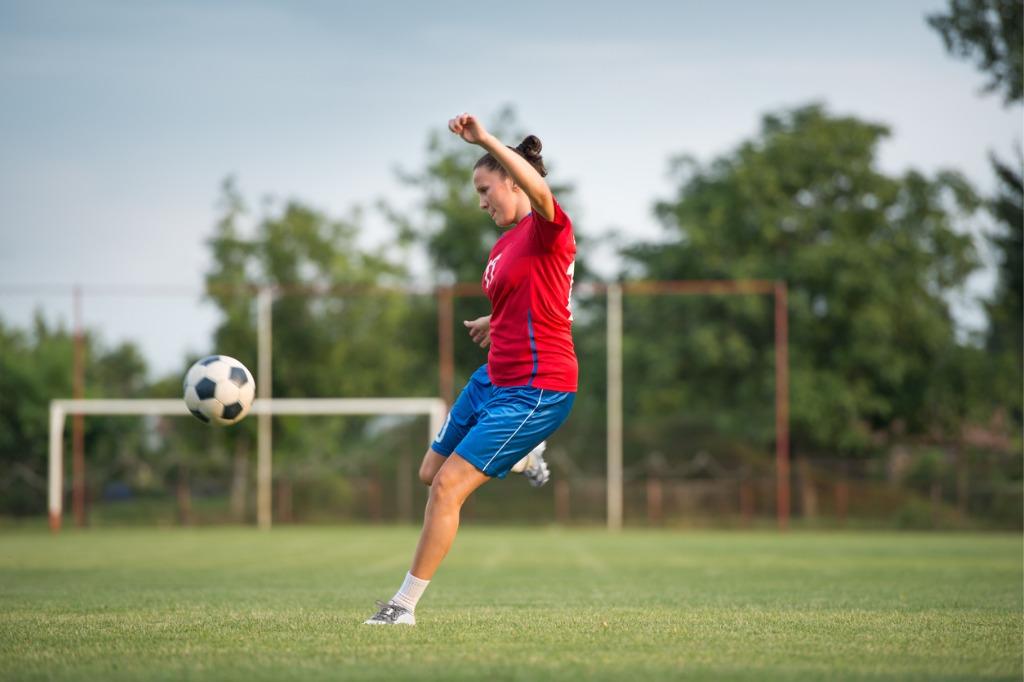Top 5 Worst Soccer Injuries Involving the Shoulders, Elbows, Knees, Hips, and Spine

Top 5 Worst Soccer Injuries Involving the Shoulders, Elbows, Knees, Hips, and Spine
The adrenaline-fueled game of soccer, loved by millions around the world, is not without its potential hazards. While it’s thrilling to watch or participate in, the high-intensity sport often leads to various types of injuries. This blog post aims to shed light on the worst soccer injuries involving the shoulders, elbows, knees, hips, and spine, some prevention strategies, and how quality orthopedic care can help.
Soccer Injuries: A Closer Look at Shoulders, Elbows, Knees, Hips, and Spine
Soccer, due to its intense physical nature and pace, can put players at risk for a variety of injuries. Many of these are the result of common gameplay actions like quick direction changes, jumping, heading, and unavoidable collisions. By being aware of these risks and understanding their preventative measures, players can enjoy the sport while minimizing potential harm.
1. Knee Ligament Injuries: ACL and Meniscus Tears
The knee, bearing the brunt of rapid direction changes, sudden stops, and impact from jumps, is particularly susceptible in soccer. Two of the most severe knee injuries are ACL (Anterior Cruciate Ligament) and meniscus tears.
The ACL, a ligament in the middle of the knee, provides rotational stability and prevents the tibia from sliding out in front of the femur. An ACL tear can occur due to abrupt slowing down, changing direction, or incorrectly landing from a jump. A torn ACL often requires surgery and a substantial period of rehabilitation.
Similarly, the meniscus, a C-shaped piece of cartilage acting as a cushion between the femur (thighbone) and tibia (shinbone), can tear from a forceful twist or rotation of the knee.
Prevention Strategies
Mitigating the risk of knee injuries involves proactive measures, including:
- Regular strength training and balance exercises can help stabilize the knee joint. Strong muscles can help absorb the stress placed on the knee.
- Incorporate agility drills in your training to enhance your ability to control the knee’s movement during abrupt motions.
- Consider wearing protective gear, such as knee braces. They can provide additional support, particularly beneficial for those with a previous knee injury.
2. Shoulder Dislocations
Though less common in soccer compared to other contact sports, shoulder dislocations can occur from a fall onto an outstretched hand or a collision with another player. A dislocated shoulder happens when the upper arm bone pops out of the socket that’s part of your shoulder blade. This injury results in intense pain and loss of movement.
Prevention Strategies
Preventive measures for shoulder dislocations include:
- Regular strength training focusing on the shoulder muscles can help stabilize the shoulder joint and reduce the risk of dislocation.
- Learning and practicing safe falling techniques can minimize the impact on the shoulder during a fall.
- Wearing protective shoulder gear during competitive play may provide additional support and protection.
3. Hip Flexor Strains
The hip flexors, a group of muscles around the upper and inner thighs and pelvic region, are crucial for high kicks and quick forward movements in soccer. Strains can occur from overuse or sudden movements, resulting in pain and difficulty moving the hip.
Prevention Strategies
Reducing the risk of hip injuries can involve:
- Regularly perform hip-flexor strengthening and stretching exercises to enhance the flexibility and resilience of these muscles.
- Ensure thorough warm-ups and cool-downs before and after games and practice sessions to prepare the muscles for the upcoming physical activity.
- Practice proper kicking techniques to reduce excessive strain on the hip flexors.
4. Elbow Sprains and Fractures
While not as common as lower body injuries, soccer players can sustain elbow injuries from falls or direct blows. An elbow sprain is an injury to the ligaments that hold the three elbow bones together, causing pain and limiting range of motion. More severe impact can cause fractures, leading to intense pain, swelling, and possible deformity.
Prevention Strategies
To prevent elbow injuries, consider the following:
- Engage in regular strength training exercises that support the muscles around the elbow. Strong muscles can help protect the joint and ligaments.
- Practice safe falling techniques to protect your arms and elbows during a tumble.
- Consider wearing protective elbow pads during high-risk situations or if you’ve had a previous elbow injury.
5. Spinal Injuries: Lower Back Strains and Disc Injuries
Spinal injuries in soccer, specifically in the lower back, can result from repetitive use, overstretching, or awkward movements during the game. Strains in the lower back muscles or ligaments can cause painful spasms. Disc injuries, such as herniated or slipped discs, can cause persistent back pain and potential nerve irritation.
Prevention Strategies
To prevent groin pulls, adopt the following measures:
- Regularly perform core strengthening exercises. A strong core provides better stability and support for the spine, reducing the risk of injury.
- Make sure to stretch regularly. Keeping your back flexible can help maintain its health and prevent injuries.
- Pay attention to your posture and movement techniques during gameplay. Improper movements can place additional strain.
The Role of Motion Orthopaedics in Injury Prevention and Recovery
At Motion Orthopaedics, we understand the passion that drives athletes and the physical toll it can sometimes take. Our aim is to provide comprehensive care that not only treats injuries but also prevents them from reoccurring. Our team of experienced physicians specializes in sports medicine and uses the latest minimally invasive techniques to get you back on your feet and back to the game.
Reach Out to Us Today: Your Health Matters
Whether you’re a soccer player dealing with an injury or seeking advice on preventing them, Motion Orthopaedics is here to help. Our experts provide personalized care plans tailored to your unique needs. Reach out to us today and start your journey toward better health, improved performance, and a safer game.




